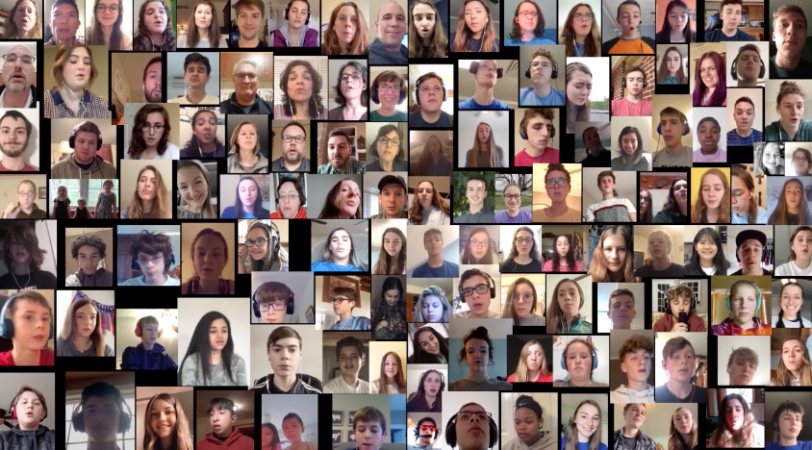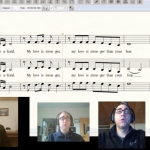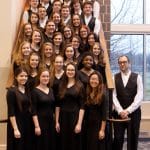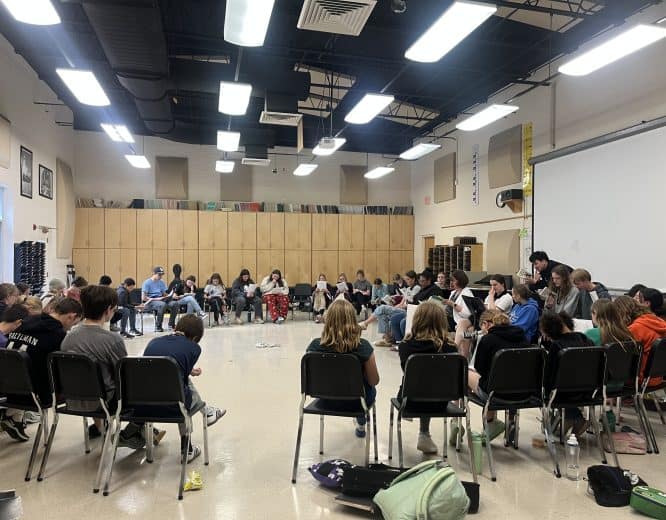EMS Virtual Choir Shares Music with More Than 30,000

More than 30,000 views of an EMS virtual choir performance of “Don’t Be Afraid,” by John Bell, on March 28 — more than 26,000 views on Facebook and more than 6,000 on YouTube — indicate that online choral singing can be meaningful, even if it comes with deep disappointment.
Choir director Jared Stutzman started the project as an assignment for his online classes, which began March 18 when EMS shut down due to the coronavirus. “My hope for the project was to connect our community, give a message of hope, and test the technique for our choirs’ future use. “The idea to add in voices of faculty, staff and alumni came later, and “that really transformed it into a wider thing that wouldn’t have happened under normal circumstances,” he says.
“Choir isn’t something you can do ‘for real’ in isolation,” says Stutzman. “It’s about the relationships, about blending 40 voices into one, uniting our spirits. You can’t really do that singing alone in your bedroom into a video camera, no matter how nice it sounds after it has been mixed together. But when you can’t get together and do the real thing, a virtual choir and lots of online chats with the choirs are a nice substitute.”
There were some unexpected outcomes, Stutzman says. “It didn’t occur to me how much I would appreciate and enjoy listening to each participant’s voice and seeing all of their faces as I worked on the project at a time when we’re all feeling kind of alone. The power of seeing faces to connect us surprised me. I think the wide span of ages — faculty, alumni, high school choirs, middle school choirs — and the message of the song, that God’s love is stronger than fear, gave it a poignancy that I didn’t see or think about when I started it.”
Ultimately, the hope is still for the 2020 EMS Touring and Chamber Choirs to sing together again in person when it’s safe to do that. “We will do our best to keep the EMS choir community strong, and we do plan to keep making virtual choir videos of some of our repertoire to share with the churches where we were scheduled to give programs this spring.”
Jared Stutzman used the free audio editing software Audacity, and edited the video using Adobe Premiere Elements 11 to create the video over about 50 hours.





